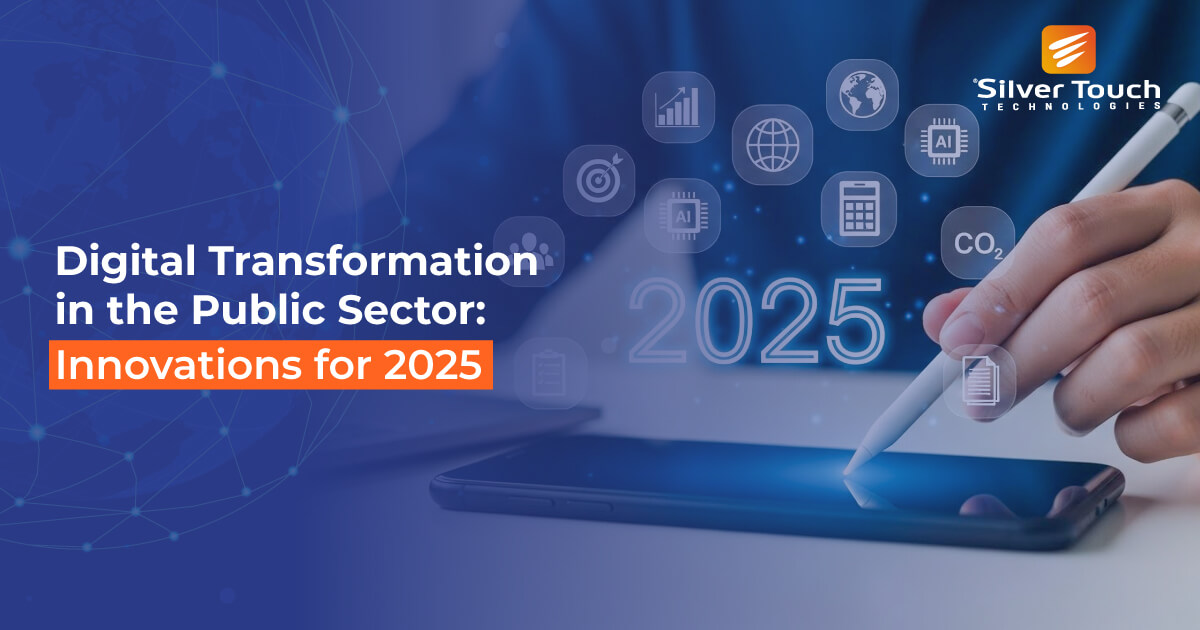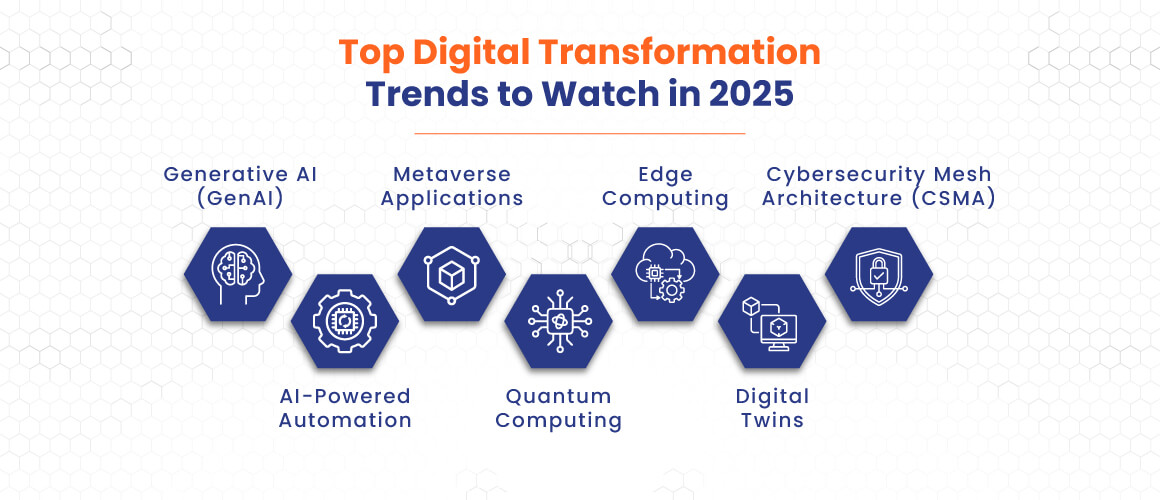Digital Transformation in the Public Sector is one of the most trending topics in 2025. A recent report by The Daisy Group highlighted that 67% of Councils and Trusts are aware of the importance of Digital Transformation and, in many instances, are trying to push ahead with programs.
“It is clear that challenges remain; lack of resources, legacy technology, and skills gaps hinder too many smaller businesses and public sector organisations, in particular, from embracing technology-led change. However, businesses seem to be getting on with the job in spite of these limitations – Daisy Group UK Transformation Report.”
The Cost of Playing It Safe
IT strategy tends to revolve around existing technologies that are understood by the people running these departments. This is, in reality, best referred to as ‘playing it safe’. The effect that this has in many instances is that, rather than invest in the future, organisations are investing in old technologies on the cusp of becoming obsolete. The resulting implementations then hinder potential efficiency savings and keep employees performing the same repetitive tasks they have been doing for many years.
There are ways of utilizing Digital transformation without having to replace every legacy system by assessing ways that a technology layer can assist these legacy systems. Some Digital Transformation specialists refer to this as API lead transformation by creating an integration layer that can be more cost-effective than replacement. RPA (Robotic Process Automation) can move even beyond this by replicating the manual processes using Bots that enable efficiencies by processing these steps in a fraction of the time required by current systems. An NHS Trust in the North of the UK implemented an RPA solution that reduced tasks that took 30 minutes each to a matter of seconds per task.
Rise of Digital Transformation Departments
Many Councils and Trusts are now choosing to invest in new departments that carry the title of ‘Digital Transformation’. The brief of these departments is to look at ways of increasing efficiency via a range of technology investments that streamline and enhance productivity. The effect of this is not to replace staff, but to get them working on tasks that provide real value to the organisation rather than having to do core data processing or trawling through spreadsheets to create reports. In many instances, this results in the duplication of effort as data is entered into multiple systems. DT strategy is intended to remove these inefficiencies and streamline processes in order to deliver a more productive outcome.
Goals of a Digital Transformation Strategy
Digital Transformation is a very broad reference, but in effect, what it means is that we look to use technology to improve efficiency, reduce costs, and improve staff wellbeing. Many innovations contribute to Digital Transformation, and it is reliant on the Strategic Team behind Transformation to identify inefficiencies and suggest viable alternatives. This could be in the form of, but not limited to;
Automation of Tasks (Robotic Process Automation(RPA))
Website integration and data capture
Business Intelligence
Chat Bots
Organisational Process Mapping
Intelligent Call-routing
Internal ‘Social Media’ style messaging solutions and a reduction of e-mail traffic
Marketing Automation
Contact Relationship Management (Customer is not a broad enough term, as CRM should relate to customers, suppliers, staff, and anyone that the organisation interacts with)
Integration of Systems to reduce disparate databases
Modern Finance solutions with links to Bank, HMRC, etc. (MTD Compliance)
Intelligent Calendar access to ensure efficient use of employee time with regard to route planning and time management.
Any other Technological advancements that could deliver value.
Why a Gradual Approach Works Best
A true transformative digital strategy is not a quick fix, but rather it is a continual process of review, adjustment, and implementation in order to continuously improve the efficiency of the organisation. It is widely accepted that to take a ‘big-bang’ approach to Transformation would be counter-productive. It would require a huge investment in infrastructure, and the resulting disruption would cause significant downtime due to the adoption of new technologies. The best way forward is to identify inefficient areas and provide solutions to correct those inefficiencies in a structured and ordered process.
Many councils, trusts, and businesses know what needs to be done. There has been a considerable amount of coverage across many media outlets in recent years on the need to improve processes. It is unfortunate to note the number of online complaints that are registered about councils and their services. The aim of a digital transformation strategy is therefore to reduce these complaints by addressing the perceived inefficiencies that exist. Unfortunately, many organisations are hampered by having key personnel who are resistant to change. It is only when they are faced with problems that they are reluctantly forced into considering newer technologies. Often, this has been coupled with a lack of available budget to facilitate change, especially during the time of austerity. We all remember too well the ransomware attacks a couple of years ago,o when some organisations that had not invested in infrastructure found themselves exposed to preventable attacks.
The Crown Commercial Services (CCS) has earmarked a considerable amount of money for Digital Transformation over the next 3 years, meaning that there is the possibility of securing central funding for some of the more ambitious projects.
You May Also Like to Read: Digital Transformation in Retail Sector Key Benefits Driving Growth
Role of the Digital Transformation Department
An efficient Digital Transformation Department will conduct regular sessions with all departments in the organisation to understand their processes and to constantly look for efficiency savings. Fundamentally, this is done using the approach of reviewing where problems and bottlenecks exist, what causes the department’s problems, and if they had a magic wand, what they would like to be able to do. This would include, but not be limited to the following;
Process mapping
Department cost centers
Structured and unstructured data processing
HR & recruitment processes
Onboarding of New Employees
IT system review
IT Infrastructure review
New project requirements
Service enhancement to the wider community
Use of web-facing portals for rapid issue resolution
Communication strategies with the greater community
Strategic ROI Modeling and Performance Reporting
The DT Department would then meet with the organisation’s senior management team every month to share findings and to make recommendations. These recommendations would be made using a return on investment model with projected savings in terms of efficiency, customer satisfaction improvements, and cost implications.
The spread of people inside the Digital Transformation Department needs to include people not only from a technical background, but also from other areas of business that have an interest in technology. The reason for this is that in many cases, people from a wholly technical background will have a loyalty towards a specific vendor, stack, or technology type and will often not be open to new and exciting enhancements. It is important to have people with the skills and ability to implement change, but it is equally important to have people who are open to new and exciting ideas. Change management is a revolution inside the culture of a business, and rather than fear change, transformational people should embrace change.
In the vast majority of cases, an active digital strategy will result in a measurable return on investment, with the steps made paying for themselves in reduced staff costs, reduced waste, increased efficiency, lower staff churn, and increased productivity.
Digital Transformation has the potential to make the limited budgets available work better for the public sector. It can make the sector more efficient, streamlined, cost-effective, and dynamic. It can deliver better service to the community by increasing the output capacity of the organisation, can decrease staff churn by improving working conditions, and improve the ability to deliver reports for a management or governmental body. In addition, a further consideration for Digital Transformation is its ability to enhance green credentials by reducing the Carbon Footprint associated with paper, ink, and waste. A Digital Transformation Strategy is therefore a solution that can deliver much gain with very little potential risk.
Top Digital Transformation Trends to Watch in 2025
Digital transformation evolves rapidly as technologies advance. Here are the top trends that we need to watch out for in the year 2025 and beyond-
Generative AI (GenAI)
We have already seen the miracles of this revolutionary approach. Be it content creation or personalisation, product design, or R&D, GenAI can always remain useful. We will witness some specialised, domain-specific models based on the Generative AI concept in the year 2025 and beyond. These models will assist particular companies or sectors with more accurate and relevant outputs to ensure sustainability in digital transformation.
AI-Powered Automation
It is one of the biggest digital transformation trends that involves automation for increasing productivity, monitoring, and efficiency. Autonomous AI agents will manage complex processes like making decisions and interacting with existing systems. Moreover, predictive analytics based on AI will improve supply chain management and resource allocation. Multiple technologies like RPA and ML will combine with AI to offer hyperautomation to modern enterprises.
Metaverse Applications
Though the consumer metaverse is in a nascent phase, the ‘industrial metaverse’ is gaining traction quickly. It focuses on improving existing physical environments with the help of AR (Augmented Reality) solutions and digital twins. Businesses will use the metaverse for virtual prototyping, remote equipment monitoring, and employee training in the years to come. Furthermore, metaverse applications will be useful as virtual remote workspaces or virtual showrooms.
Quantum Computing
2025 will be a critical year for organisations to become ready for quantum computing. Many companies have already started making an application roadmap and exploring various use cases to understand the scope of quantum applications. Here, the focus will remain on developing hybrid applications that combine classical and quantum computing for solving complex problems. Businesses will also give priority to a ‘quantum-safe’ future.
Edge Computing
IoT devices and real-time data processing drive edge computing in the corporate sector, and this trend is here to stay. On one hand, edge computing can reduce latency, and on the other hand, it reduces the strain on cloud networks. Moreover, AI and edge computing will combine to offer faster insights and improved performance in industries like retail and manufacturing. Data processing using edge computing remains cost-efficient, which will increase its adoption over the period.
Digital Twins
These are virtual replicas of physical assets, systems, or processes. Future-ready technologies like AI, IoT, and data analytics contribute to the evolution of digital twins. They enable companies to simulate scenarios to gain real-time visibility into operations. It leads to quicker and better decision-making processes across various timeframes. Moreover, industry-specific digital twins can benefit core sectors including manufacturing, healthcare, energy, and utilities etc.
Cybersecurity Mesh Architecture (CSMA)
Digital ecosystems are becoming more complex with the integration of emerging technologies. As a result, traditional security models remain insufficient to protect corporate data. Here, CSMA comes into the picture as a scalable security approach. It distributes security controls across a wider IT environment, remaining aligned with Zero Trust principles. Moreover, this architecture is useful for protecting hybrid and multi-cloud environments in the cloud native transformation process.
Companies can consult a trustworthy digital transformation solution provider to leverage the benefits of these upcoming trends while addressing key challenges.
Legacy Tech Isn’t Enough Anymore. Reinvent Public Services with Digital Intelligence.
Major Challenges of Digital Transformation in Public Sector
Digital transformation brings immense potential for public sector enterprises. However, when it comes to implementing digital transformation for improving citizen services and transparency, the following challenges can make the process cumbersome-
Legacy Systems and Outdated Infrastructure
Outdated technologies and complex legacy systems are difficult to maintain or upgrade. The lack of proper interaction and robust communication between different departmental systems leads to data fragmentation and duplication. It results in high maintenance costs.
Budget Constraints and Funding
Public sector organisations often face budgetary limitations and changes in priorities. It makes it difficult for these enterprises to get the substantial investment necessary for large-scale transformation. Furthermore, longer procurement cycles is a big hurdle.
Resistance to Change through Transformation
Bureaucratic issues and hierarchical structures with rigid processes become obstacles in the way of digital transformation. Lack of digital mindset and internal resistance are also significant challenges in implementing new technologies or solutions.
Data Security and Privacy Protection
Integration of AI in digital transformation has made data security and privacy protection the top concern for every enterprise. Talking about the public sector, governments need to ensure the security of highly sensitive citizen data and maintain public trust
Skill Gap and Workforce Development
The public sector faces trouble in attracting and retaining skilled professionals in various areas like data analytics and cloud-native transformation. This sector competes with the private sector, which has higher salaries with more dynamic environments.
Digital transformation solutions for the public sector should meet regulatory requirements and fulfill the citizens’ expectations. A holistic approach and proper planning can help public sector enterprises address these challenges.
How Enterprises Can Prepare for Digital Transformation
Digital transformation is an ongoing and unique journey for every enterprise. However, all these companies can keep some points in mind to prepare for digital transformation effectively.
It starts with having a clear vision and strategy for implementing advanced technologies. Companies should focus on agility to reduce time-to-market and ROI to increase revenue from new digital services. An official report has suggested that AI in digital transformation can bring automation to reduce operational costs by 15 percent within 24 months.
Moreover, companies need to embrace cross-functional teams for better collaboration and a unified approach. It is better to implement data governance policies to ensure data security and privacy protection. A test-and-learn culture assists companies in improving the adaptation of digital transformation. Finally, it is always necessary to keep the customer experience at the core.
Finally, companies should invest in people and culture transformation while leveraging digital tools strategically. Whether it is cloud computing or hyperautomation, companies should focus on technologies that can deliver value to their businesses.
Concluding Lines
Digital transformation has emerged as a game-changer for every industry sector. Trends like edge computing, Generative AI, metaverse, and AI-induced automation can take public sector enterprises to the next level with better and more personalised citizen services.
However, it is essential to address sector-specific challenges and make a proper roadmap considering budget, ROI, and other factors. This guide on implementing digital transformation in the public sector will assist you in making the right decision about the strategy and technology selection. Silver Touch Technologies UK is your trusted digital transformation partner. We assist public sector companies in implementing cloud-native transformation using emerging technologies. Contact us to know more about the latest trends of digital transformation 2025 and beyond, with its scope for your company.
FAQs
AI enhances public sector delivery processes by eliminating duplication of tasks, speeding up delivery of services to citizens, reducing human error, and creating more data-driven decisions.
Digital transformation is paramount to meet citizen expectations, improve transparency and access; provide faster services; and achieve long-term operational efficiency.






